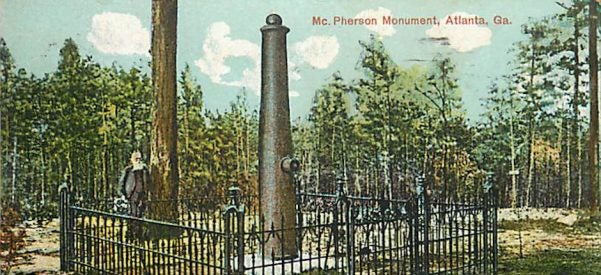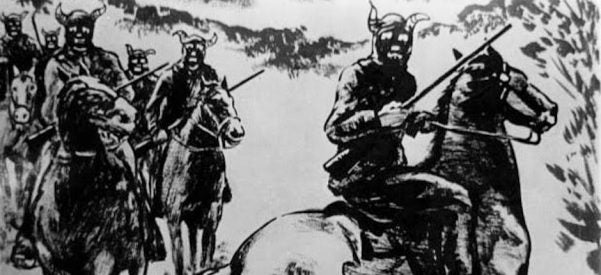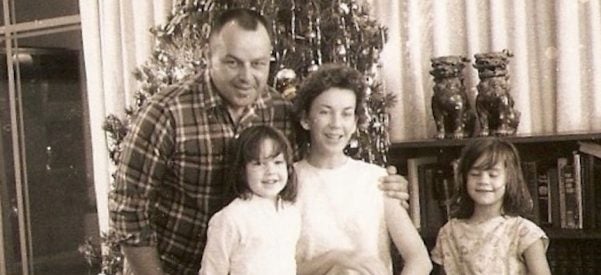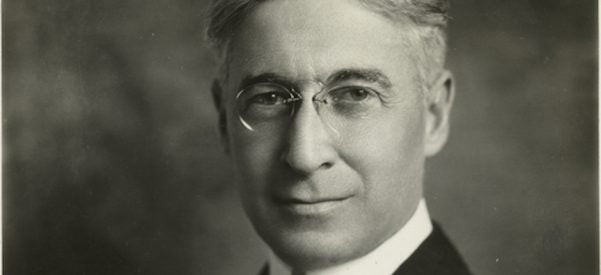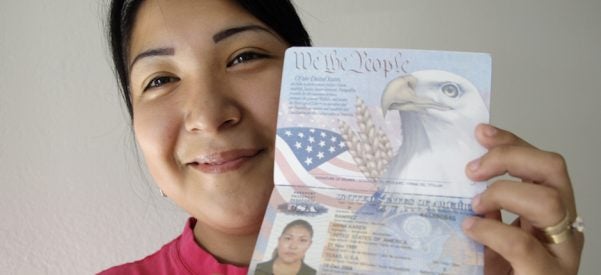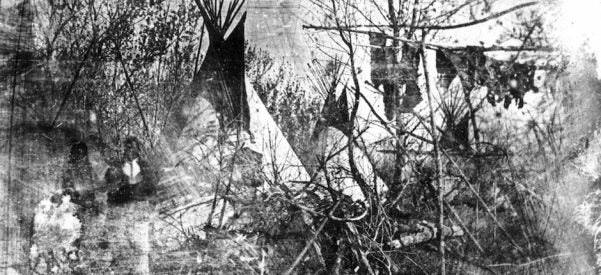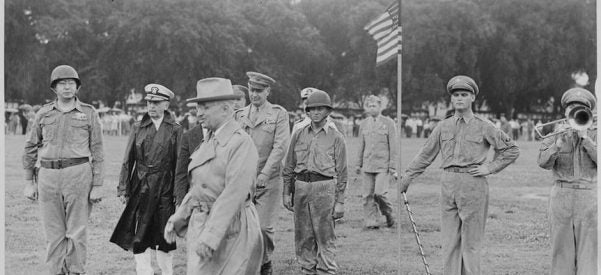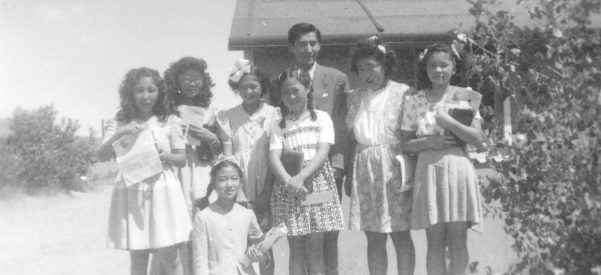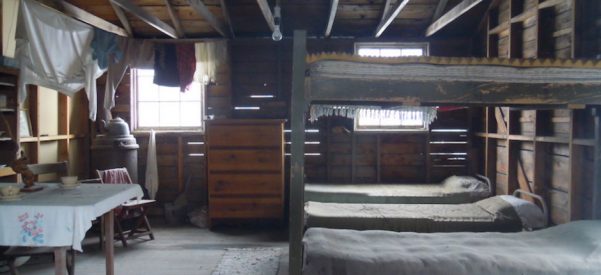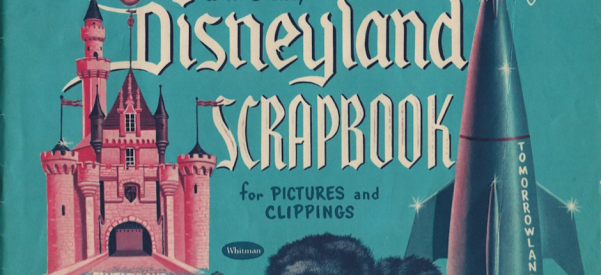Explore
: American History
Restoring Twin Monuments to the Blue and Gray Unites a Changing Neighborhood
By Henry Bryant
March 3, 2017
One hundred and fifty years ago, my colorful East Atlanta neighborhood sat two miles outside of the city limits. By July 22, 1864, Union troops had set up their front lines along a trail that later became our main street. When the Confederates decided to bring the fight to their enemy, these quiet woods became the location of the devastating Battle of Atlanta, where some 12,000 men were killed—including, rather unusually, two opposing generals.
Today, a short walk from my house, …
Read More >
In the Lawless Post-Civil War Ozarks, the Vigilante Bald Knobbers Took Government's Place
By Lisa Hix
February 24, 2017
When I was seven years old, in 1983, my family took a road trip from Stillwater, Oklahoma, to Branson, Missouri, a family-oriented resort town deep in the Ozark Mountains. Our destination was Silver Dollar City, a Christian-owned theme park that is like Disneyland reimagined as a 19th century mining village, all built around a cave that was a bat guano mine in the 1880s. There, I went on a frightening dark ride called Fire in the Hole.
In the waiting area, …
Read More >
But as a Child My Fighter Pilot Dad Was My Nuclear Bomb-Smashing Superman
By Karen Bjorneby
February 13, 2017
On a Tuesday morning in mid-October 1962, my father received a phone call ordering him to fly from where we lived, Richards-Gebaur Air Force Base outside Kansas City, Missouri, to Grand Island, Nebraska. He had to leave immediately. He couldn’t tell my mother why, but he did tell her that the president would speak later that night on television, and that she should listen.
My mother didn’t need to hear anything more. As soon as he left, she bundled my sister …
Read More >
The Practice of Tapping the Moneyed Elite Began with WWI—and Was Surprisingly Scandal-Free
By Charles Rappleye
February 10, 2017
From our earliest days we Americans have embraced leaders from among the ranks of the nation’s moneyed elite. Voters set the tone when they chose George Washington, the wealthiest man on the continent at the time, as the first president.
But that choice was accompanied by a healthy skepticism of the role of money in the halls of government. As the years went by, recurrent scandals prompted rounds of reform, fostering an intricate system of rules to promote ethical conduct.
The result …
Read More >
What Began as an Informal Means of Introduction Became the Ultimate Government-Sanctioned Authenticator
By Craig Robertson
February 6, 2017
It was originally a European tradition, not ours. But in 1780, needing a more formal way to send former Continental Congressman Francis Dana from France to Holland, Benjamin Franklin used his own printing press to create a new document. The single-sheet letter, written entirely in French, politely requested that Dana and his servant be allowed to pass freely as they traveled for the next month. Franklin signed and sealed the page himself and handed it off to Dana, creating one …
Read More >
The Sole Surviving Image of the Perilous Journey Provides a Crucial Bridge to History
By Steve Rivo
January 27, 2017
On a cold day in late November 1853, in a place called Big Timbers, in what is today southeastern Colorado, a Jewish photographer named Solomon Nunes Carvalho hoisted his ten-pound daguerreotype camera onto a tripod and aimed his lens at a pair of Cheyenne Indians. At first glance, the resulting image, scratched and faded from years of neglect, seems unremarkable. But in fact it is probably the oldest existing photograph of Native Americans taken on location in the western United …
Read More >
The About-Face Permitting Japanese Americans to Enlist Provoked Dissent, Anger—And the Remarkable 442nd Regiment
By Franklin Odo
January 19, 2017
In January 1943, President Franklin Delano Roosevelt and his War Department abruptly reversed course by allowing Japanese Americans to enlist in the U.S. Army in the fight against Germany and Japan.
This was not a foregone conclusion: The draconian mass removal and incarceration of 120,000 Japanese Americans had been justified as a military necessity—and continued to be enforced. Two-thirds of those incarcerated were American-born Nisei, second-generation citizens; one-third were Issei, Japan-born immigrants, prohibited by law from applying for naturalization.
In …
Read More >
The Pain of Remembering Is Deep, But the Danger in Forgetting Is Far Worse
By Chizu Omori
January 18, 2017
I am a member of a once despised minority group, American Japanese, who spent three and a half years incarcerated in an American concentration camp during World War II. Although that ordeal ended 72 years ago, the impact of that experience on my life and its broader implications for American society resonate deeply to this day.
In 1941, at the beginning of the war, roughly 10 percent of the adult “alien” men (Japan-born persons being ineligible for citizenship) were picked up …
Read More >
The Tale of a Daring Night Raid That Vindicated Japanese Americans
By Andrea Pitzer
January 18, 2017
In spring 1941, months before the bombing of Pearl Harbor, a team led by U.S. Naval Intelligence officer Kenneth Ringle broke into the Japanese consulate in Los Angeles.
One man stayed downstairs to guard the elevator while the rest snuck upstairs using skeleton keys to make their way to the back rooms. They brought along a safecracker—a convicted felon sprung for one night to help them—as well as local policemen and FBI agents, who set up patrols outside during the …
Read More >
The Disneyfication of American History Began Long Before the Theme Parks
By Bethanee Bemis
January 3, 2017
There are few symbols of pure Americana more potent than the Disney theme parks. To walk down any of the destinations’ manicured Main Streets, U.S.A.—as hundreds of thousands of visitors do each day—is to walk though a particular vision of America’s collective memory. It’s small-town values. It’s optimism. It’s energy. It’s innovation. It’s a certain kind of innocence. It is by design, the story of the “American Way”—and one that has played a dominant role in shaping the collective …
Read More >


